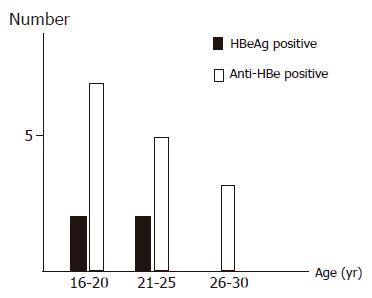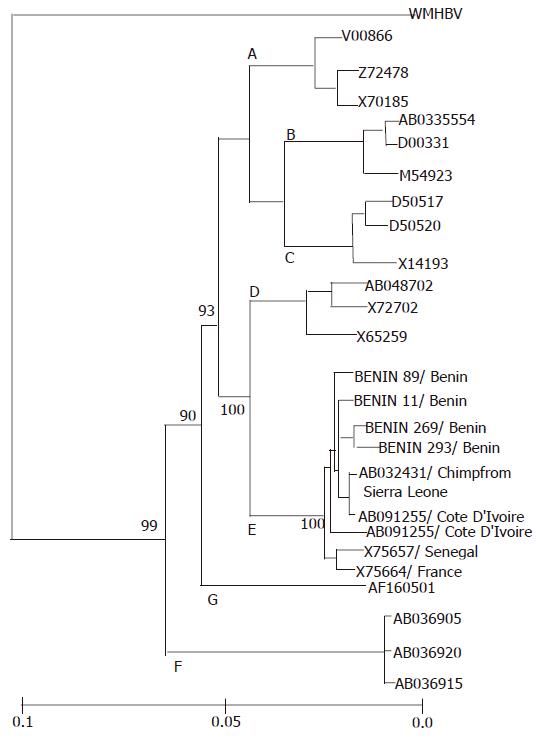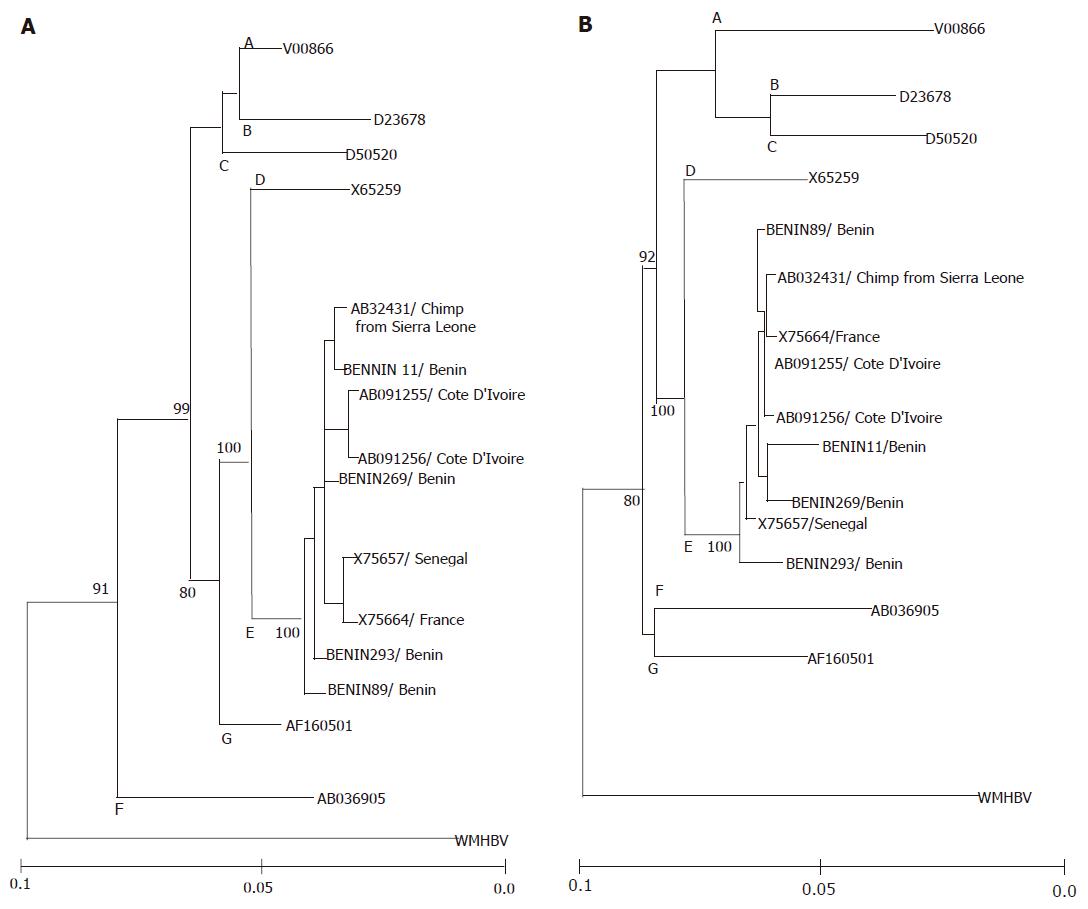Copyright
©2005 Baishideng Publishing Group Inc.
World J Gastroenterol. Nov 7, 2005; 11(41): 6410-6415
Published online Nov 7, 2005. doi: 10.3748/wjg.v11.i41.6410
Published online Nov 7, 2005. doi: 10.3748/wjg.v11.i41.6410
Figure 1 Age-specific prevalence of HBeAg/anti-HBe status in 19 HBV genotype E strains.
Figure 2 Phylogenetic tree constructed on complete nucleotide sequences of 26 HBV isolates.
The nine HBV genotype E isolates were compared along with 16 HBV isolates representative of the other six genotypes (A–D, F and G), along with woolly monkey hepatitis virus (WMHBV) as an outgroup. The four HBV genotype E isolates determined in this study are indicated in boldface, and the other 22 HBV isolates are specified by accession numbers. The country of origin is indicated after the slash for each HBV isolate of genotype E.
Figure 3 Phylogenetic trees representing the large S gene (A), and precore region plus core gene (B) along with the strains of the other six genotypes and WMHBV.
Figure 4 Nucleotide sequences constituting parts of the BCP to the precore of nine HBV genotype E isolates with the consensus sequences of the other six genotypes.
The four Benin isolates determined in this study are shaded in gray.
- Citation: Fujiwara K, Tanaka Y, Orito E, Ohno T, Kato T, Sugihara K, Hasegawa I, Sakurai M, Ito K, Ozasa A, Sakamoto Y, Arita I, El-Gohary A, Benoit A, Ogoundele-Akplogan SI, Yoshihara N, Ueda R, Mizokami M. Distribution of HBV genotypes among HBV carriers in Benin:phylogenetic analysis and virological characteristics of HBV genotype E. World J Gastroenterol 2005; 11(41): 6410-6415
- URL: https://www.wjgnet.com/1007-9327/full/v11/i41/6410.htm
- DOI: https://dx.doi.org/10.3748/wjg.v11.i41.6410












